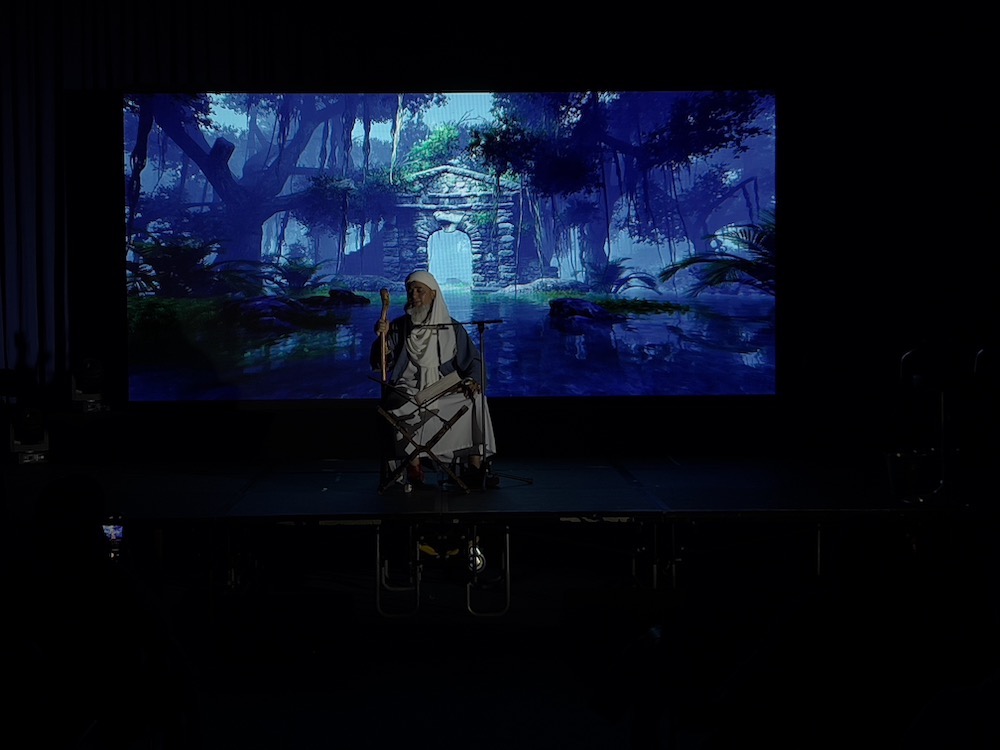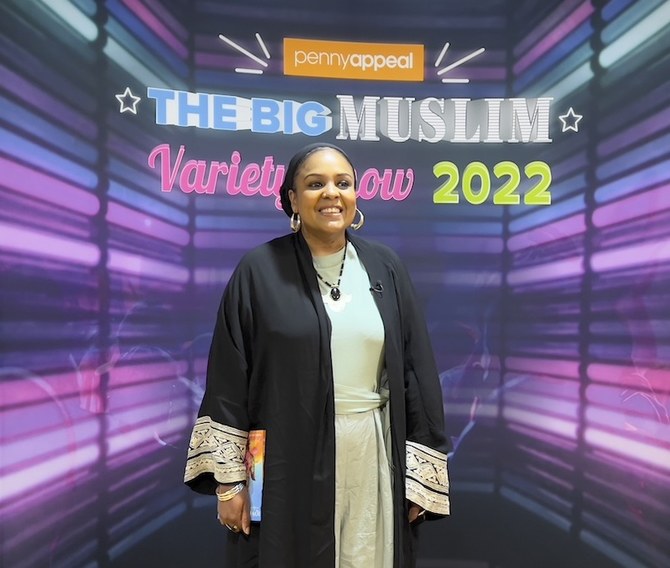LONDON: Some of the best British Muslim artists and performers have concluded a series of star-studded nights across the UK, following a three-year hiatus due to the COVID-19 pandemic.
The Big Muslim Variety Show, which is an annual event organized by international humanitarian charity Penny Appeal, toured 10 British cities to raise money for orphans while entertaining local communities with a range of different performances, including spoken word, beatboxing, nasheed singing, drumming and a British-Australian playing the didgeridoo.
“People just want to get back out and come to events and enjoy themselves, and obviously at the same time they’re doing something good by giving to charity so the response from the community has been absolutely phenomenal,” Ridwana Wallace-Laher, senior director of growth at Penny Appeal, told Arab News.

This year the show was hosted by British-Somali stand-up comedian Prince Abdi for the first time. (AN Photo/Hasenin Fadhel)
The fifth version of the show was in aid of the charity’s OrphanKind appeal, which supports orphans worldwide and provides vital resources such as education, food, medical aid and clothing. The target for each city was to support about 100 orphans, Wallace-Laher said, adding they raised over £100,000 ($122,032).
This year the show was hosted by British-Somali stand-up comedian Prince Abdi for the first time, who said that the variety of performances generated a lot of different emotions, as there were comedians making you laugh, amazing vocalists, or others speaking on a spiritual level.
He described the audience reaction as “refreshing” and said that there was plenty of inspiration happening when the performers were on stage, and while he was introducing the different acts.

Nasheed singer Hassen Rasool performed against a backdrop of striking cinematography to bring a multi-visual experience for the show. (AN Photo/Hasenin Fadhel)
“There’s a lot of people in the audience, I believe, that would want to have a go, for next year, for example, and go, ‘Oh, I wanna do that too.’” Abdi said.
Nasheed singer Hassen Rasool decided to bring a multi-visual experience for the show and performed against a backdrop of striking cinematography.
He said that his voice “genuinely melts not only the hearts of the faithful but also people from all walks of life,” and believes it is his duty to use his voice to bring people closer to God.
Rasool, 47, also said that it was important to remember the charity aspect and that it should not all be in vain. “We are here to entertain, but at the same time fulfill these incredible responsibilities we have around the world.”

British-Jamaican poet and spoken word artist, Sukina Noor, took part in the show for the third time. (AN Photo/Hasenin Fadhel)
British-Jamaican poet and spoken word artist, Sukina Noor, who took part in the show for the third time, brought a spiritual element to audiences as she spoke about the journey of the heart and soul.
“I’m very keen on the reflections of the seeker in the city. I very much feel that that’s important because for us as Muslims, our holy lands are in the East, they’re far away. So sometimes we can feel like we have to be in another land to access God,” Noor said.
The 40-year-old added that she brings feminism into the delivery of her work because she feels it is important that people have access to women’s experiences — “what it means to be a believer, what it means to be devoted to Allah, I don’t know that we hear those voices as often.”
The 25-year-old classically trained musician and songwriter, Waseelah, could not bring her piano on the tour so she created music on the fly using live looping and synth pads, as well as making soundscapes.

25-year-old classically trained musician and songwriter, Waseelah, created music on the fly using live looping and synth pads. (AN Photo/Hasenin Fadhel)
“I’ve been a musician my whole life, I’ve been singing since I was a child and I don’t know anything else other than having music in my life constantly, and I guess music is a journey, you sort of grow through your sound and get bored a lot, and try different sounds, different spaces, and this is where I’ve ended up,” she said.
The British-Moroccan said that the biggest thing she hoped to achieve from audiences was to normalize the idea of having Muslim women in music.
“The idea of having a Muslim woman on stage when I was doing it, it wasn’t easy, it’s still not very easy, and to be able to almost break that mold, break that habit and say that actually this is something we can do, that we should do, and in the prophetic period, it’s what we did do, and bring it back.
“I think that would be the ultimate goal, but otherwise just to have fun,” Waseelah said.






































